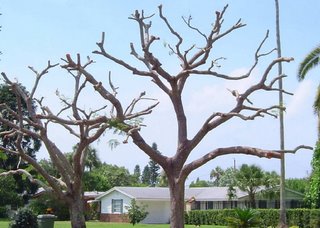PAYNE PARK NEIGHBORS CALL FOR BLACK MONDAY PROTEST AT SARASOTA’S CITY HALL MAY 15, 5:30 P.M.
MOURNING THE DEATH OF CITIZEN VOICE BEFORE THE CITY COMMISSION
May 12, 2006 - Frustrated by a repeated pattern of votes that completely ignore the guidance of City Planning Staff, unanimous decisions by the City Planning Board, and popular opposition by City neighborhoods, Payne Park neighbors from Alta Vista, Terrace Gardens and Laurel Park neighborhoods will descend upon City Hall Monday evening in black, mourning the death of Citizen voice before the City Commission.
With complete disregard for all concepts of logical growth management; sustainable inclusion of workforce housing in-step with million-dollar condos; traffic, sewage, and environmental management related to these gargantuan projects, our City leaders ignore Citizen surveys and sentiment and just plow ahead with breakneck speed to turn Sarasota into Gotham by the bay.
Kathy Kaminski, a 20-year resident of Terrace Gardens and local health care worker who now faces the prospect of 7 stories of 474 condominiums in her back yard reflects, “I come from Philadelphia. This never happens in Philadelphia. There’s respect for neighborhoods and there are logical transition zones. I never thought I’d see this day in Sarasota. I never thought that I would have to protest our local government.”
At 5:30 p.m. this Monday, Payne Park neighbors, dressed in black, will gather in front of the late, Jack Cartlidge’s “Nobody’s Listening” sculpture at Sarasota’s City Hall for a silent protest lasting thirty minutes. The Citizen mourners will then file into City Hall silently and respectfully take their seats in the Commission chambers for an additional thirty minutes of mourning. All other Sarasota citizens who are equally disturbed by the current direction of our City are encouraged to attend in black as well.
Beyond the protest, the group will press the Commission to include neighborhoods in involved, constructive processes that allow all of us to say ‘yes’ to the future development and progress of our City. We will formally request the Commission to create:
A Citizen’s Workforce Housing Initiative that will be tasked to work with City Planning Staff and the Planning Board to assess needs, create long-term solutions for permanent workforce housing stock, and produce public/private partnerships that build units. The initiative will be focused on
- smart infill development of housing
- neighborhood compatibility
- inclusionary workforce housing
Contact:
Kelly Kirschner
941-928-9978, Kelly@deeproots.org
Kate Lowman,
941-362-9303, lowmancarter@earthlink.net
 Burns Court is a small section of downtown Sarasota that is a real gem. Located a couple blocks south of Five Points, where Orange and Pineapple converge, it is a walkable, friendly, interesting
Burns Court is a small section of downtown Sarasota that is a real gem. Located a couple blocks south of Five Points, where Orange and Pineapple converge, it is a walkable, friendly, interesting  area that is a visual treat. Historical buildings, neat and trim landscape with trees and "human scale" make this very pedestrian friendly. The unique shops, art cinema and restaurants can keep you engaged for a delightful morning, afternoon or evening.
area that is a visual treat. Historical buildings, neat and trim landscape with trees and "human scale" make this very pedestrian friendly. The unique shops, art cinema and restaurants can keep you engaged for a delightful morning, afternoon or evening. Fanciful designs including stars and undersea looking creatures make you look down at the art work.
Fanciful designs including stars and undersea looking creatures make you look down at the art work.


















 Black Monday was mourned by 175 residents of Sarasota on Monday night.
Black Monday was mourned by 175 residents of Sarasota on Monday night.




